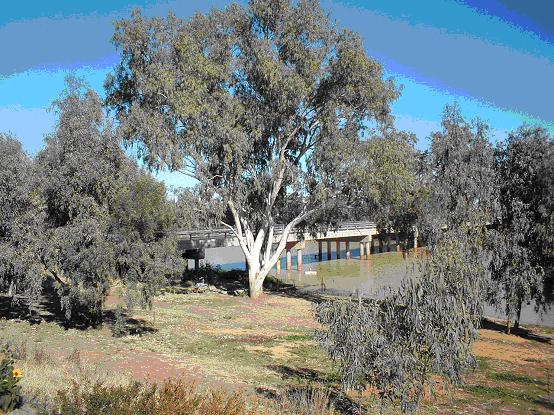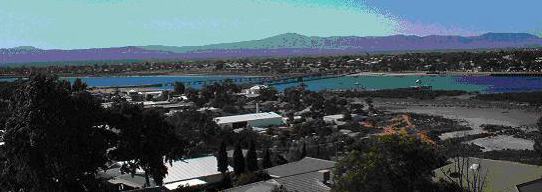|
Caravan Log
Written by Neil MacPherson
2nd August Left Townsville 5.40am, did 520 km, we are overnighting at Clermont,
it has been a long day after hibernating for 68 days, another 500 odd kilometres
tomorrow.
 |
Cunnamulla Oasis in the desert
|
3rd August Clermont to Blackall lots of kangaroos both dead and alive on
the roadside, these outback towns are unique in their isolation and friendliness.
4th August Blackall to Cunnamulla our third day on the road, three long
8 hour drives in three days, 5am reveille, so tomorrow is a rest day, roads
have been a mixed bag, several long stretches have been single lane sealed,
needs constant concentration with a big caravan in tow.

Neil's F100 & Caravan home
5th August Cunnamulla is a town of 1600 people, the town seems to be self
sufficient, it's very isolated, Charleville 200 km to the north, Bourke
257 km to the south, Brewarrina 96 km East, Thargomindah 195 km to the
west, the Warrego river runs through the town, and provides some relief
from the dry country.
6th August we did not get up till 6am, driving in the dark is too hazardous with the kangaroos so prevalent, got away 6.40am day was breaking just as well the kangaroos were feeding in their hundreds along the road side, I was driving and kept the speed down so I could slow down to avoid those crossing the road which was often.
It was heart breaking to see injured kangaroos struggling to get up as we approached, back broken I would say, we had nothing to put the poor buggers out of their misery, obviously recently hit, probably by one of the many road trains.
Bourke was a big surprise, orange orchards and vineyards line the road on the approaches to the town, the Darling River starts at Bourke, four smaller rivers join at Bourke to form the Darling.
Cobar our overnight stop seems quite busy, we expected to see a dead town as the mine closed down since last we stayed here, it hit the headlines as the miners got nothing out of the collapse. At about the same time the clothing factory managed by Howard's brother went into liquidation and the Government guaranteed the workers entitlements, which did not go down well with the miners who missed out.
7th & 8th August Broken Hill, took another rest day, although the town's population is falling because of the closure of the last big mine Pasminco, it still has 24,500 residents, was able to again get in some good long walks to maintain my fitness.
Jack & I are having another rest day in Broken Hill before tackling
the long trip across the Nullarbor after some long days on the road, averaging
8 hours driving on narrow roads with lots of hazards what with Kangaroos,
sheep, emus and goats contesting our right of way.
After reaching Port Augusta at the head of Spencer's Gulf and refuelling and topping up supplies we will still have 3600 kilometres to travel through the most remote country to complete our journey.

Port Augusta Spencert's Gulf
Between Ceduna and Norseman some 2,000 km distance only lonely Road Houses,
up to 200 kilometres apart exist with fuel and food only available for
travellers, no mechanical assistance is available over this distance, one
must be self-supporting to survive.
With the drought conditions in the western parts of Queensland and NSW the kangaroos and emus and stock are all grazing on the roadside verges where there is still a little green showing, the rest of the grass is so dry and brittle it crackles as you walk on it.
It has been mainly new territory for us, we usually go home via Mt Isa Tennant Creek and Alice Springs but we were told that 600 km could be cut off the trip by going Charters Towers, Emerald, Barcaldine, Blackall, Charleville, Bourke ,Cobar & Broken Hill.
We were astounded at Bourke, you know "back of Bourke" but it is surrounded by Orange orchards and vineyards, as the Darling river starts there they have first go at the water and obviously don't spare it.
Several rivers feed into the Darling at Bourke and just below including the Culgoa, Barwon, Bowen, Mulga, Yanda & Warrego although at this time most are dry.
I hope these snippets gives you an idea of what travelling in the Australian outback is like, a bit different from the cities you have visited on your trips to Australia.
|

